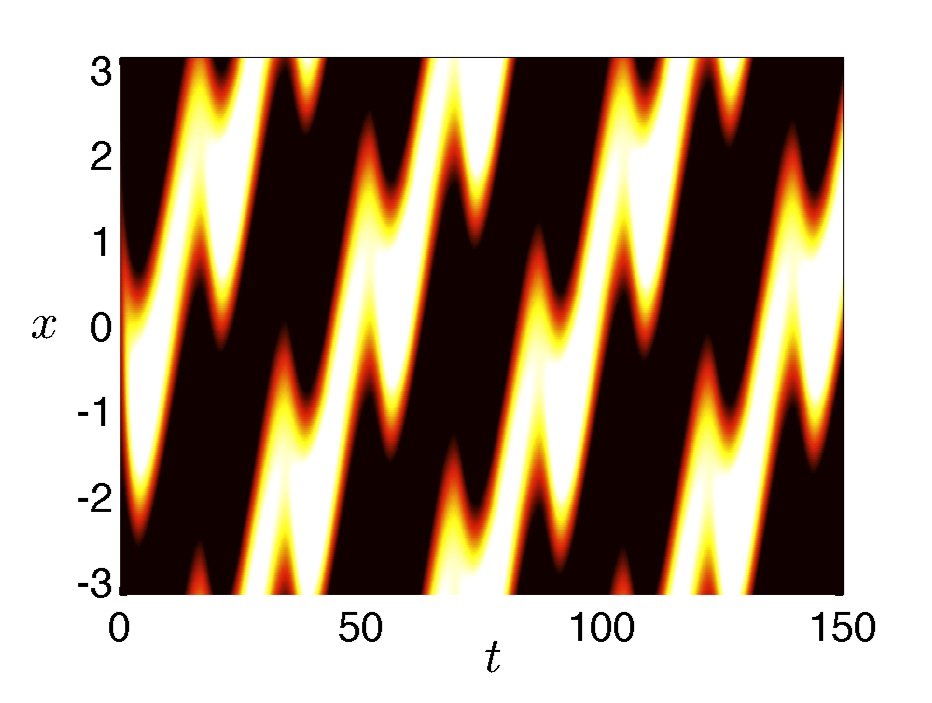Hallucinogen persisting perception disorder in neuronal networks with adaptation.
 Hallucinogen persisting perception disorder in neuronal
networks with adaptation.
Hallucinogen persisting perception disorder in neuronal
networks with adaptation.
Zachary P Kilpatrick and Bard Ermentrout
J Comp. Neurosci., 32 (2012) pp. 25-53.
Abstract: We study the spatiotemporal dynamics of neuronal networks with spike frequency adaptation.
In particular, we compare the effects of adaptation being either a linear or nonlinear function of neural
activity. We find that altering parameters controlling the strength of synaptic connections in the network
can lead to spatially structured activity suggestive of symptoms of hallucinogen persisting perception disorder
(HPPD). First, we study how both networks track spatially homogeneous flickering stimuli, and find input
is encoded as continuous at lower flicker frequencies when the network's synapses exhibit more net
excitation. Mainly, we study instabilities of stimulus-driven traveling pulse solutions, representative of visual
trailing phenomena common to HPPD patients. Visual trails are reported as discrete afterimages in
the wake of a moving input. Thus, we analyze several solutions arising in response to moving inputs in both
networks: an ON state, stimulus-locked pulses, and traveling breathers. We find traveling breathers can
arise in both networks when an input moves beyond a critical speed. These possible neural substrates of visual
trails occur at slower speeds when the modulation of synaptic connectivity is increased.
PDF
HTML
 Hallucinogen persisting perception disorder in neuronal
networks with adaptation.
Hallucinogen persisting perception disorder in neuronal
networks with adaptation.